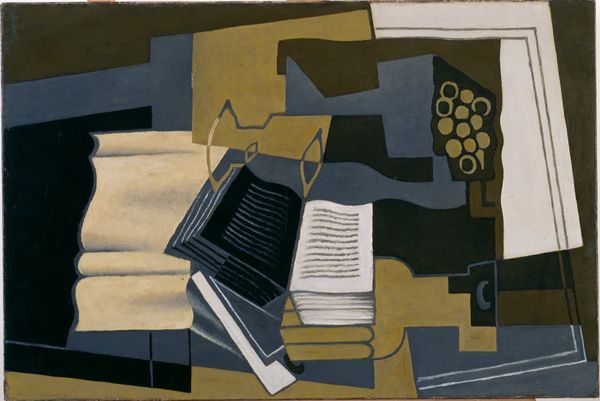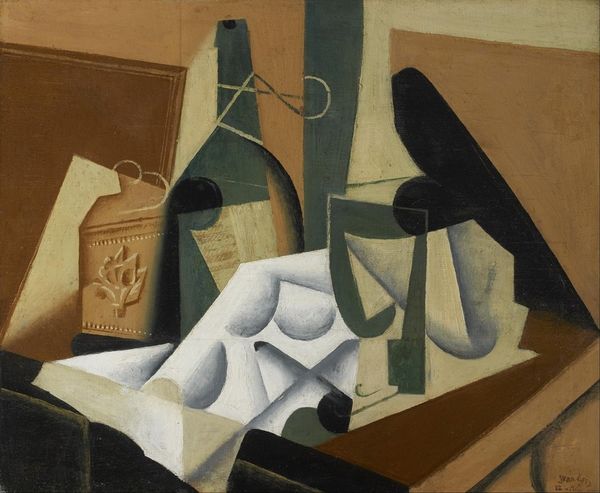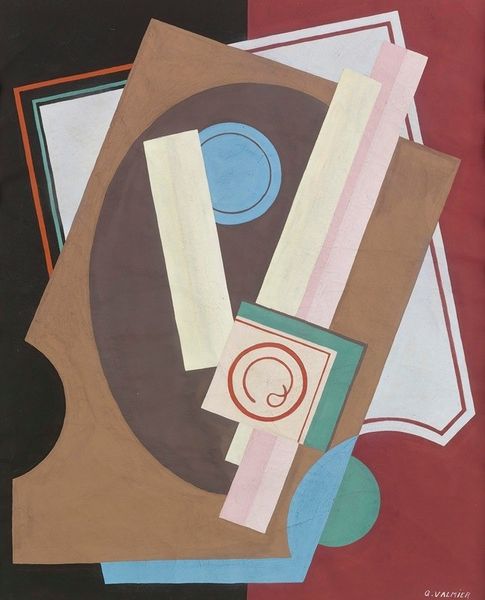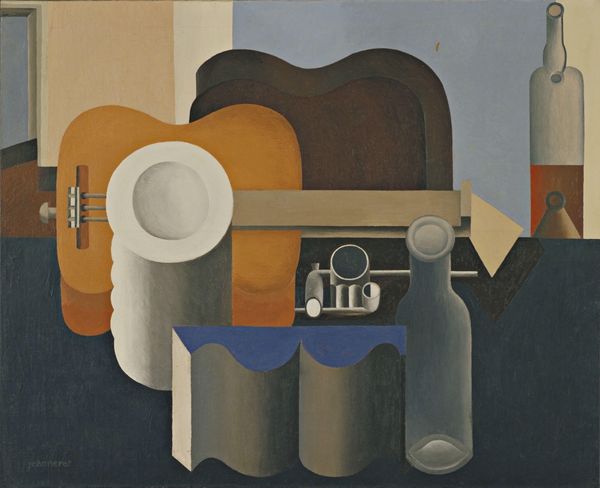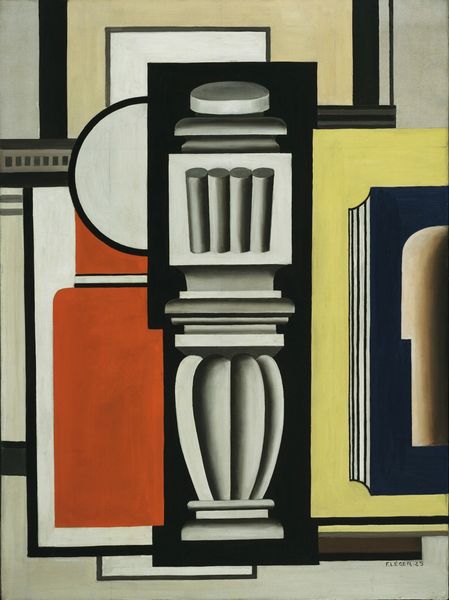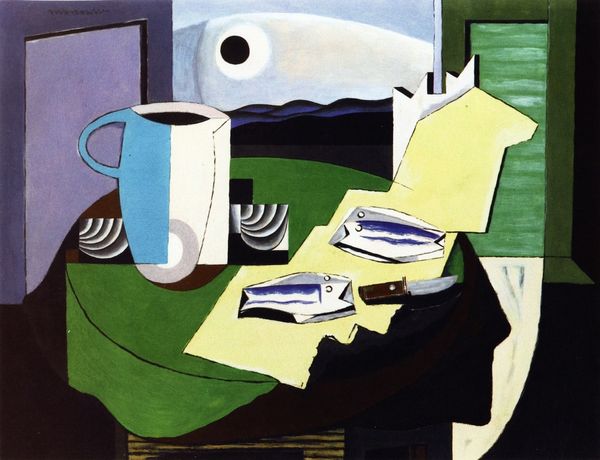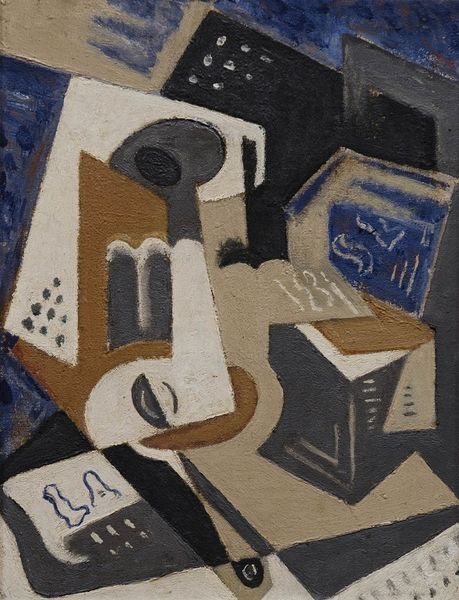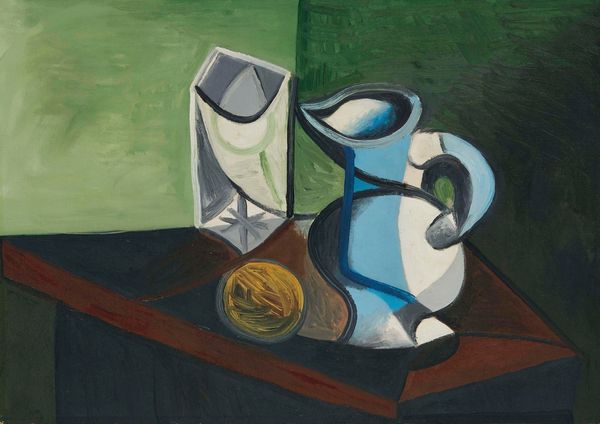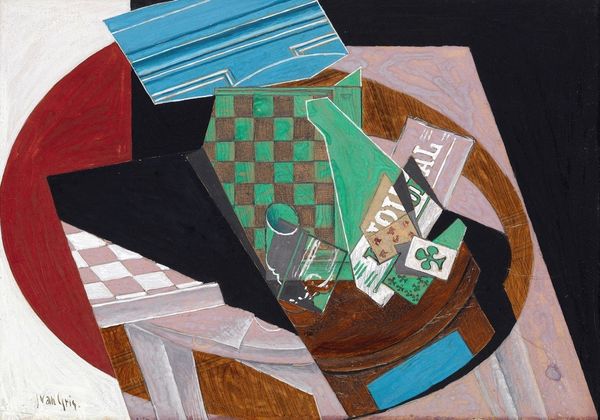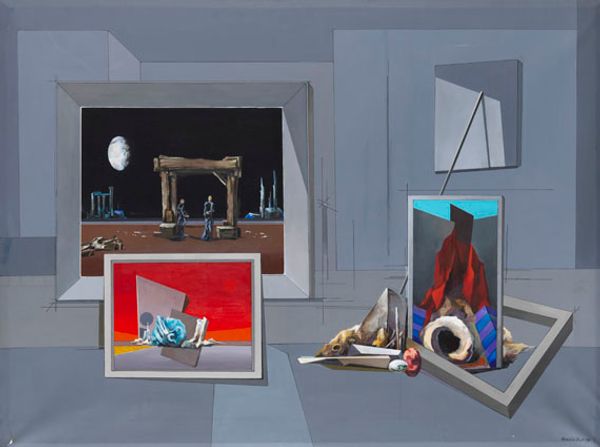
oil-paint
#
cubism
#
oil-paint
#
oil painting
#
geometric
#
modernism
Copyright: Public domain
Curator: Let's take a look at "Bodegón Del Pan" or "Still Life with Bread", an oil painting by María Blanchard, created in 1920. What are your first impressions? Editor: There's a strange intimacy to this Cubist still life. Despite the fractured forms, the domestic objects – a bowl, a sugar cube, the basket – evoke a sense of comfort, though somewhat disrupted. It’s as if a familiar memory is being seen through a distorted lens. Curator: Blanchard’s artistic trajectory is fascinating, marked by a commitment to Cubism that coincided with deep personal struggles. What stands out to me is how the angular forms and planes still convey the tangible materiality of the bread, the coolness of the sugar cubes, and the weight of the porcelain. How do these simple objects translate the realities of class, labour and production from the early 20th century? Editor: Well, considering the title refers specifically to bread, I am drawn to its near absence. We only see a suggestion of a loaf. Bread, culturally and religiously, symbolizes nourishment, sustenance, often spiritual. Its fragmentation here, the barely there bread, almost implies a societal scarcity. Perhaps post-war anxieties seeping in? Curator: Indeed. Blanchard was working in a time of great societal upheaval. She uses these conventional still life items not just as subjects but to mirror and maybe critique the conditions of post-war Europe. Her commitment to exploring the textures and forms would, perhaps, speak of labour. I can almost imagine a craftsman meticulously shaping these loafs and preparing them for delivery. Editor: Looking at how light catches the angular facets of the sugar cubes and the complex colour play on the teapot, I find a subtle defiance against total fragmentation. The symbolism isn't eradicated, rather intensified, perhaps reflecting the resilience of cultural memory amidst disruption. Curator: It's compelling to consider how the fractured representation can embody both physical reality and also symbolize social and personal fragmentation, revealing how production is influenced by economic factors. This work invites contemplation of these dynamic interplays. Editor: A striking distillation of the personal and symbolic power residing within the most commonplace of objects.
Comments
No comments
Be the first to comment and join the conversation on the ultimate creative platform.

